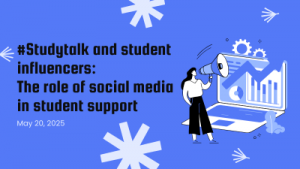Yongyan Li, Associate Professor, University of Hong Kong
Chinese students new to an English-medium university outside mainland China often approach their written assignments with some trepidation, fearing that their writing might be accused of plagiarism. The concern is understandable, given that in China, the traditional conceptualization of plagiarism has focused on large-scale copying (‘wholesale plagiarism’), to the neglect of local-level transgressive source-use (‘textual plagiarism’); and that it is moral education, rather than specific instruction on how to use and cite sources properly at sentence and paragraph levels, that has been the focus of anti-plagiarism education.
Faced with the problem of plagiarism among English as a Second Language (ESL) students from China, teachers at English-medium schools and universities tend to have various assumptions, some of which may be misguided (e.g., “plagiarism” is tolerated in the Confucian Heritage Culture society of China). To address mis-assumptions, there is a need to garner systematic evidence to demonstrate how the issue of plagiarism has been conceptualized and addressed in China. This is what I aimed to do in a forthcoming book titled Perspectives on plagiarism in China: History, genres, and education (in the Routledge Contemporary China series). Textual materials including classical Chinese texts, newspapers and periodicals in the pre-1949 era, documents, academic literature, correspondence texts on plagiarism cases, and academic writing textbooks published in China served as the research data in the project. Qualitative content analysis, genre analysis, discourse analysis, and case analysis were conducted.
The book consists of 12 chapters. Following an introductory chapter, Chapter 2 presents evidence to show that plagiarism was condemned in classical China since antiquity. Chapters 3 and 4 portray the landscape of the issue of plagiarism in the early decades of the 20th century, with Chapter 4 delving into the multi-genre correspondence texts on plagiarism cases (editors’ texts on plagiarism, readers’ reports of plagiarism cases, and responses of the accused). Focusing on the 1950s–70s, Chapter 5 examines how the criticism of plagiarism reflected national themes of the time, with “labour” extolled and “bourgeois exploitative ideology” denounced, while Chapter 6 shows how a discourse of public criticism and self-criticism played out in a Correspondence on Plagiarism Cases Corpus (CPCC) 1950s–60s.
Respectively featuring the periods of the 1980s–2000s and the 2010s–early 2020s, Chapters 7 and 8 analyse the evolving Chinese academic environment across the decades and prominent cases of plagiarism exposed in the media. It is observed that “non-standard source annotation” (zhushi bu guifan) is commonly used as an excuse for plagiarism and that citation negligence (yinwen shifan) is a long-standing issue in Chinese publications. Chapter 9 profiles the genres in a Correspondence on Plagiarism Cases Corpus (CPCC) 1980s–2010s, echoing the analysis covered in Chapters 4, 5, and 6. Chapter 10 illustrates a rich stock of figurative and metaphorical expressions on plagiarism in the CPCC1980s–2010s and the wider Chinese publications.
Chapter 11 examines key documents issued at the national level over time for standardizing source annotation, regulating academic publishing, and laying down codes of citation. It is pointed out that what was previously called “citation negligence” was finally defined as “textual plagiarism” in an official document issued in May 2019, and yet its impact on educational practices will not slow any time soon. The concluding chapter, Chapter 12, describes what has been done in the Chinese education system in terms of anti-plagiarism education, but points out that specific, text-based instruction on what is plagiarism and how to avoid it is still seriously inadequate. It is argued that English for Academic Purposes (EAP) teachers could play an important role in the drive for change.
Such a book that presents a critical Chinese history on the issue of plagiarism by systematically evoking textual materials spanning from the classical to the contemporary times is long over-due. The book offers a rich body of resources for educators and learners to draw upon and will inspire future research. The project is an output of a project funded by the General Research Fund, Research Grants Council, Hong Kong (project code 17610019).



